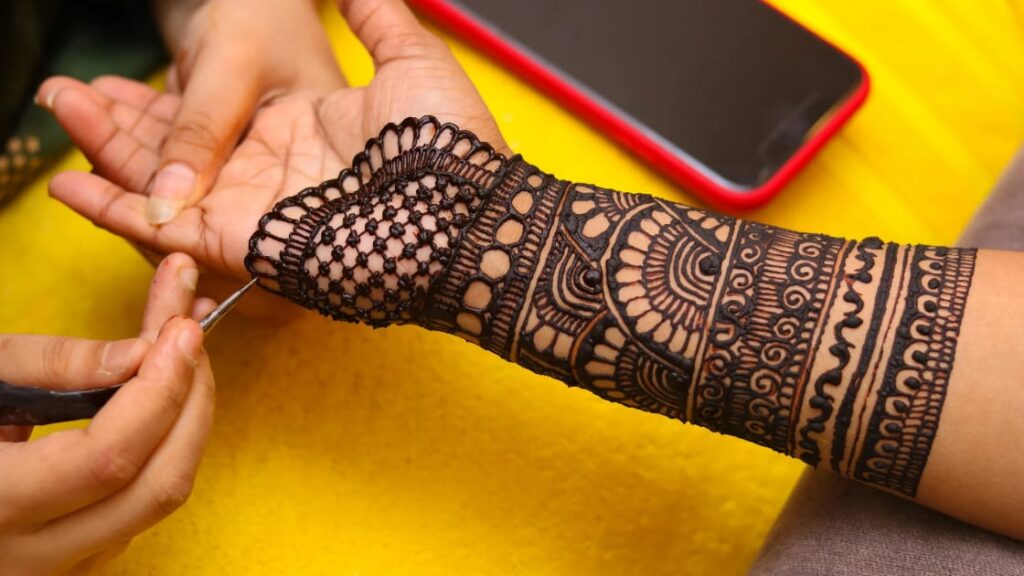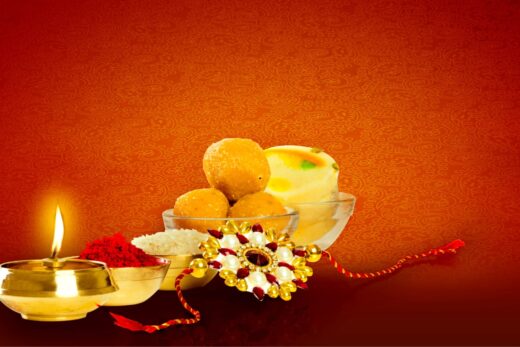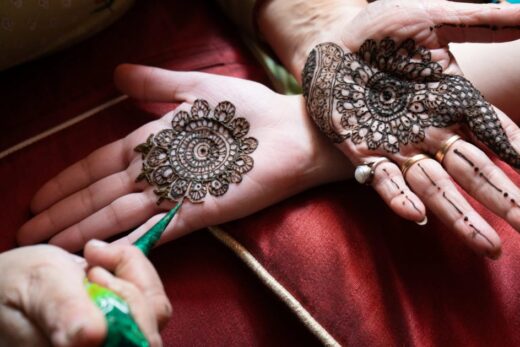
Mehndi, also known as henna, is one of the most beautiful and cherished traditional art forms in South Asian culture. The image above perfectly captures the elegance and intricacy of a modern mehndi design being applied on a woman’s hand, showcasing the depth and precision that goes into this age-old practice. This traditional body art holds cultural, spiritual, and aesthetic significance, especially during festivals and weddings.
A Rich Cultural Legacy
Mehndi has been practiced for over 5,000 years in India, Pakistan, the Middle East, and North Africa. Historically, it has been used not just for decorative purposes, but also for cooling the body and bringing blessings, joy, and good fortune. In Indian weddings, mehndi plays a central role in bridal adornment. It is believed that the darker the bride’s mehndi, the deeper the love between the couple.
The Art Behind the Design
The design shown in the image is an exquisite example of modern mehndi, combining traditional motifs like florals, mandalas, and intricate lace patterns with contemporary aesthetics. Such detailed mehndi takes time and skill, often requiring a professional artist with a steady hand and creative vision. The fine lines, symmetry, and filled patterns indicate the use of high-quality mehndi paste, giving a rich and bold stain once dried.
Read More: Raksha Bandhan 2025: Celebrating the Eternal Bond of Love and Protection
Popular Occasions for Mehndi
While weddings remain the most popular event for mehndi application, it is also commonly seen during festivals like Karva Chauth, Eid, Diwali, Teej, and Raksha Bandhan. Many people also apply mehndi simply for its beauty or for spiritual significance during poojas and religious ceremonies.
Modern Trends in Mehndi
In today’s digital age, mehndi designs have become more experimental and personalized. Social media platforms like Instagram and Pinterest are filled with trending designs—Arabic mehndi, Indo-western fusion, minimalist finger designs, and full-arm bridal artwork like the one in the image. Brides now often include meaningful symbols, initials, or story elements in their designs, adding a personal touch to tradition.
Mehndi and Natural Skincare
Apart from its visual appeal, mehndi has natural cooling and anti-inflammatory properties. It’s known to help reduce stress, improve circulation, and promote calmness. This makes it not just an art form but a therapeutic one too.
Conclusion
Mehndi is more than just decorative art—it’s a celebration of heritage, creativity, and tradition. The stunning image of mehndi application showcases the timeless allure and evolving artistry of this cultural practice. Whether for a wedding, festival, or simple celebration, mehndi continues to bring joy, beauty, and elegance into our lives.




